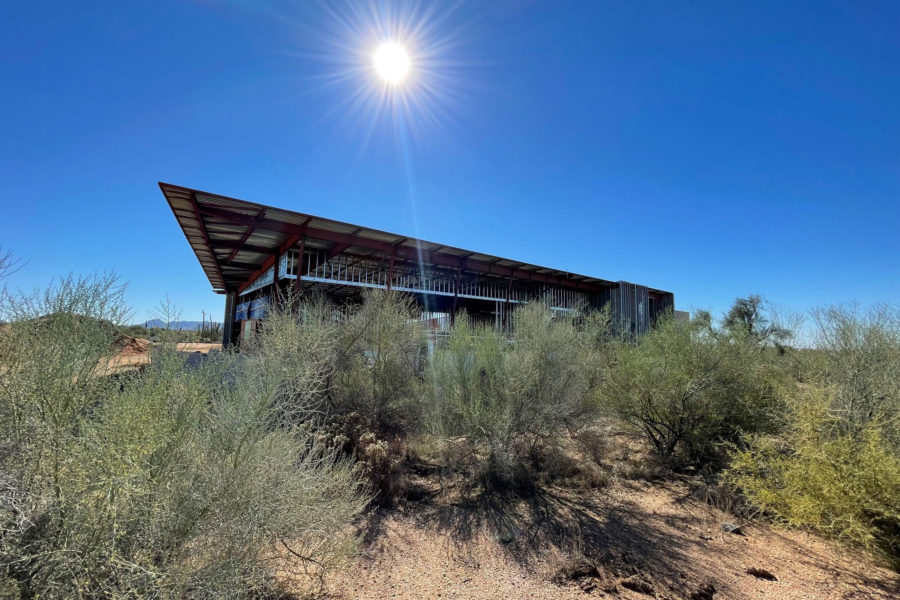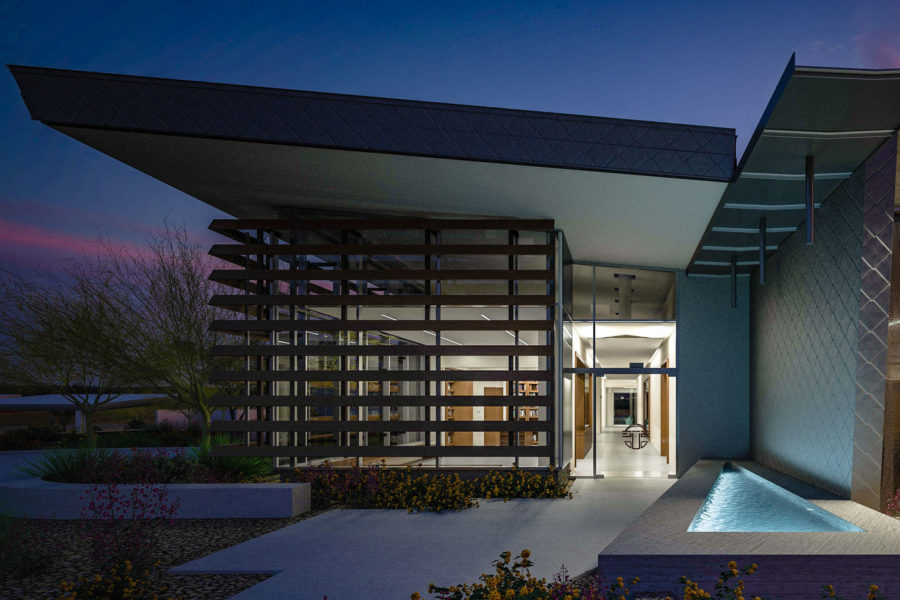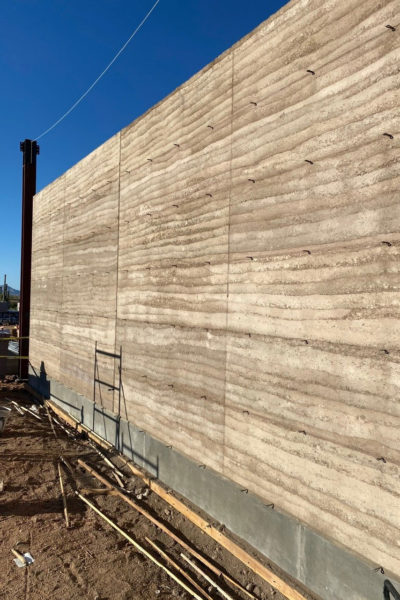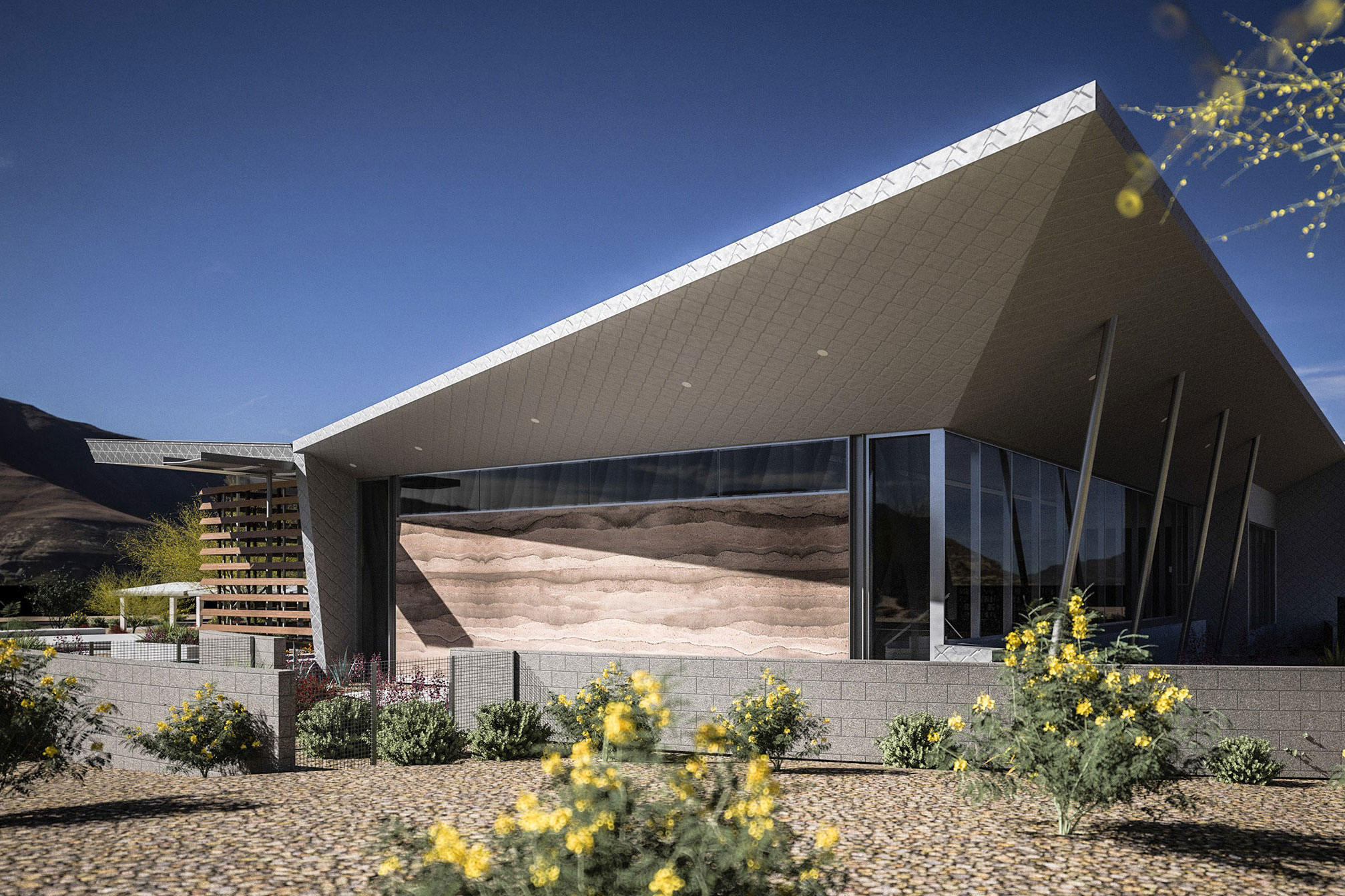Story at a glance:
- This spiritual center was designed by Orcutt | Winslow and is being built by 180 Degrees Design + Build in Scottsdale.
- The 13,000-square-foot project will significantly minimize the development footprint of the site.
- The building’s design follows many of the principles of the Living Building Challenge.
The new headquarters of the TSG Foundation’s Center for Spiritual Development was designed by Orcutt | Winslow and is currently being constructed by 180 Degrees Design + Build in Scottsdale—a city known for its envious winter climate and luxurious amenities.
The site is situated on an 11-acre parcel in the Sonoran Desert, surrounded by the scenic mountains of north Scottsdale, Carefree, and Cave Creek, Arizona. This parcel of land was originally master planned to support 11 one-acre lots with custom homes in the 5,000- to-7,000-square-foot range.
Project Goals

Photo courtesy of 180 Degrees Design + Build
The new 13,000-square-foot TSG project will significantly minimize the development footprint of this site, with a lot coverage of less than 5%. Its 24-foot maximum height and low scale will maintain the surrounding view corridors from the homes of bordering neighbors.
The TSG Foundation is anchored in the spiritual teachings of Torkom Saraydarian. The foundation’s vision is to utilize the new building to help empower people and offer a transformative space where visitors can pursue improved levels of happiness, joy, and creativity through books, study courses, and seminars.
Torkom’s daughter, Gita Saraydarian, currently operates the foundation and has spearheaded the mission to construct a space that employs many sustainable standards. The overarching design goals were to achieve the vision of merging the science of the Living Building Challenge with spirituality while successfully incorporating the immediate environment to coexist harmoniously with the natural landscape.
The building is infused with a sense of health and wellness that leverages the natural environment by creating meaningful and useful connections to the outdoors. It is axially rotated on the site to welcome the southern winter sunlight, northern views to the Carefree Mountains, and opportunities for night-time star viewing. Feng Shui principles are integrated in the design throughout the site and building.
Design Details

Rendering courtesy of Orcutt | Winslow
A meandering desert pavement driveway will welcome visitors to the center and provide glimpses of the TSG Foundation as you reach the drop-off point. Parking areas are organic in shape and well landscaped to screen them from street view, with a stabilized decomposed granite surface to minimize the heat island effect. A pedestrian bridge links the parking areas to the building crossing a shallow desert wash and giving visitors a time for pause and reflection as they approach or leave the building.
Visitors are welcomed into a large lobby space with access into a 3,000-square-foot sanctuary space that opens up to the north.
A research library is adjacent to the sanctuary and gives visitors controlled access to Torkam’s original manuscripts. A central corridor links these public spaces to the administrative offices on the southwestern side of the building.
Walking through the building, filtered light penetrates into the space via large operable glass windows creating a feeling of openness.
Sustainable Features
On the exterior, regional and natural materials have been selected to withstand the harsh desert environment and mimic the plants and wildlife native to the area. The diamond-shaped zinc tiles used on exterior walls take biophilic inspiration from the region’s native rattlesnake. Zinc tiles were also selected for their recyclability, should they ever need to be replaced, and manufacturing zinc is significantly less harmful to the environment when produced—compared to many other metals used in construction.
The biomimicry of the saguaro cactus is another design component inspired by nature. “Approximately half of the building’s masonry exterior implements the form and function of the saguaro cactus, specifically the cactus ribs,” says Jose Pino, project manager of 180 Degrees Design + Build.
The naturally occurring form of the saguaro cactus’ ribs are known to function as a cooling mechanism that creates pockets of cooler, shaded air. This form of the building’s west facing masonry exterior will aid in cooling the building with no use of additional energy, contributing to one of the project’s passive energy strategies. “The significant soffit overhangs create a shadow line on the large glazing, preventing direct sunlight hitting them,” says Tyler Sternberg, project superintendent. “We also have the system paper tone, which is a recycled material, too, that’s in front of the southeast side.”
Harnessing the desert’s abundant solar energy is one of the project’s top energy strategies. Solar panels will be attached to the canopy of the parking structures, converting solar energy into stored electric energy that can be used as a power source needed to operate the building.
The design of the project’s complex HVAC system is another active energy strategy. This system utilizes an underground duct system to maximize the thermal efficiency of the cooling systems. Unlike typical HVAC systems, this is implemented deep below the surface and connected to custom made diffusers. The net result is a more efficient cooling system, combined with the ability to compartmentalize the operational flow. Therefore separate spaces within the building can be adjusted individually as needed.

Rammed earth wall during construction of the TSG Foundation’s Center for Spiritual Development. Photo courtesy of 180 Degrees Design + Build
A focal point of the design is a large rammed earth wall that uses the ancient building technique of compacting soil (extracted from the site) and other aggregate, using pneumatic tampers to create a structurally sound wall. “The construction of a rammed earth wall of this size required testing the process with a smaller mockup version and great precision, which involved engineering,” Sternberg says.
Pino adds, “Due to the moisture content, it is very difficult to maintain the ideal consistencies, and correctly timing the process once the material is poured into the formwork is critical.” The end result was a beautiful, naturally produced artistic structure, with extremely low levels of embodied energy compared with most building processes.
Overhangs and screens of recycled composite paperstone are incorporated to protect glazing and preserve the building envelope. The interior palette employs natural materials like ground concrete with local earth toned aggregate, wood panels, wood and cork flooring, and acoustic gypsum for acoustic relief. The material selection will create calming biophilic spaces that deinstitutionalize the building and exude a feeling of wellness and hope. Further, the material selection adhered closely to the requirements of the Living Building Challenge by carefully excluding the use of Red List materials. From paints to metals, the project is using products that are deemed less toxic to the environment in their production and use.
Through the building’s passive and active energy strategies, the Foundation is striving to be a Net Zero Energy and Petal Certified–building through the Living Building Challenge. The project is scheduled to be completed in the summer of 2022.




